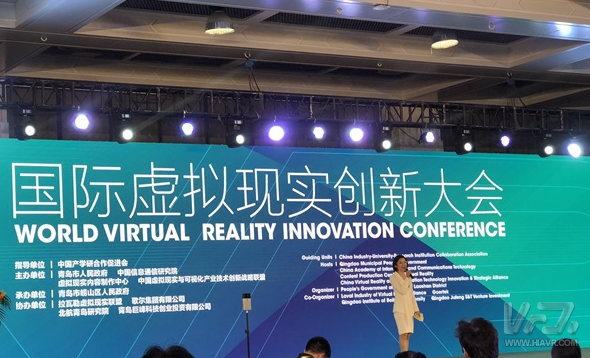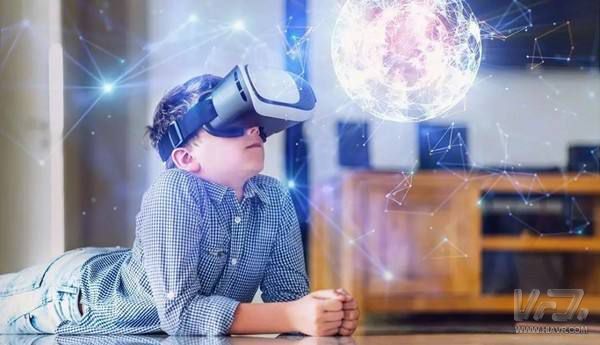On November 9, the 2017 International Virtual Reality Innovation Conference was opened at the Qingdao International Convention and Exhibition Center. More than 800 companies from China, the United States, France, and other companies participated in the exhibition to showcase the latest virtual reality technology products and achievements. We know that VR technology uses a computer to generate a simulation environment. It uses multi-source information fusion, interactive three-dimensional dynamic visual scenes, and system simulation of physical behavior to immerse users in the environment to create a human sense. 3D virtual world. While the new technology brings a new education reform space, it has a low technical threshold, is easy to use and learn, and is more convenient than an “electronic blackboard†in application operations. In the future, VR classrooms will become the main expressions of VR education. VR blackboards and VR lessons Tables, VR desks, etc. can accommodate a wide variety of VR tutorials and teaching materials and can be used with teachers. It can be said that the combination of VR/AR and education has subverted the bottleneck of the traditional teaching method in which the educated party cannot participate or interact; it not only provides students with a vivid and realistic learning environment, such as building a human model, computer space travel, and compounds. Molecular structure display, etc. can also save educational costs, evade the risk of actual operations, stimulate students' knowledge learning and innovation potential, solve and break through the difficulties and bottlenecks in traditional teaching, and make the micro-world macro, the plane world three-dimensional, and the abstract world It will bring an unprecedented education reform. VR started in VR+ industry, and then gradually developed into VR+ security, VR+ military, VR+ education, VR+ medical, VR+ real estate, VR+ tourism and other fields. One of the main reasons for its gradual rise is that the characteristics and core of virtual reality are immersive and people Immerse yourself in the virtual space while also being interactive and imaginative. Nowadays, with the continuous development of VR/AR technology, the education field is already one of the important endeavors of VR technology. As the most representative virtual reality technology at this stage, the VR+ education model will surely become an important direction for future education development. The "13th Five-Year Plan" of China's "Education Informatization" clearly puts forward "the core philosophy and application-driven approach of adhering to the deep integration of information technology and education and teaching." As an important part of education informatization, VR education is strongly supported by the national policy level. Of the 200 billion yuan in government financial education funds, 35% of the government’s annual investment has been placed on education informatization. The potential of the VR education market can be said to be incalculable. According to a report released by Goldman Sachs, VR/AR technology has been applied in the simulation training, industry, education, medical, entertainment, aerospace, real estate, tourism and other industries, and has developed to a certain scale. It is expected that the scale of China's VR market will reach 790.2 in 2021. Billion yuan, and in 2020, the VR education market will reach 300 million U.S. dollars, and in 2025 it will reach 700 million U.S. dollars. In addition, Goldman Sachs believes that VR/AR equipment will be the first to enter the K12 (Basic Education Stage) market as an interactive tool, and VR technology is expected to become the standard in the education market. However, VR+ education has a long way to go. There are still many deficiencies in the overall business of VR education. Only by working hard to solve these problems can VR education be sustained. On the one hand, the lack of content production is the primary problem facing the VR education industry. Whether or not VR education content can be continuously produced and produced, whether the content is of high quality, and whether it can be matched with the actual situation of the current medium and small-sized education is the key to whether VR+ education can continue to rise and spread in the future. Secondly, the cost of control is another breakthrough for VR education. Problems. At present, a set of VR education must be at least 500,000, which restricts its promotion and application. Furthermore, the lack of talents and weak research power are the links that VR education needs to improve. The continuous development of an industry will inevitably require the support of talents. For emerging industries such as VR+ education, it requires a lot of technology and constant input from developers. However, the gap in the current VR industry professionals has reached a million. In addition, the industry standards urgently need to be aroused widespread attention. The specifications of the VR education industry have yet to be established in the future. The prevalence of pseudo-VR in the market makes it difficult for practitioners to respond. The development of VR+ education in China is still in its infancy, and the entire market needs a long-term cultivation process. This requires not only the efforts of enterprises, but also the policy support of the governments at all levels and education departments, as well as the high attention of schools, and catalyzing this. The rapid development of a market. Bidirectional EV Charging Stations Bidirectional EV Charging Stations, Ev Charger Charging Station, Bidirectional ev charger Bidirectional EV Charging Stations Shenzhen Hongjiali New Energy Co., Ltd. , https://www.hjlcharger.com
